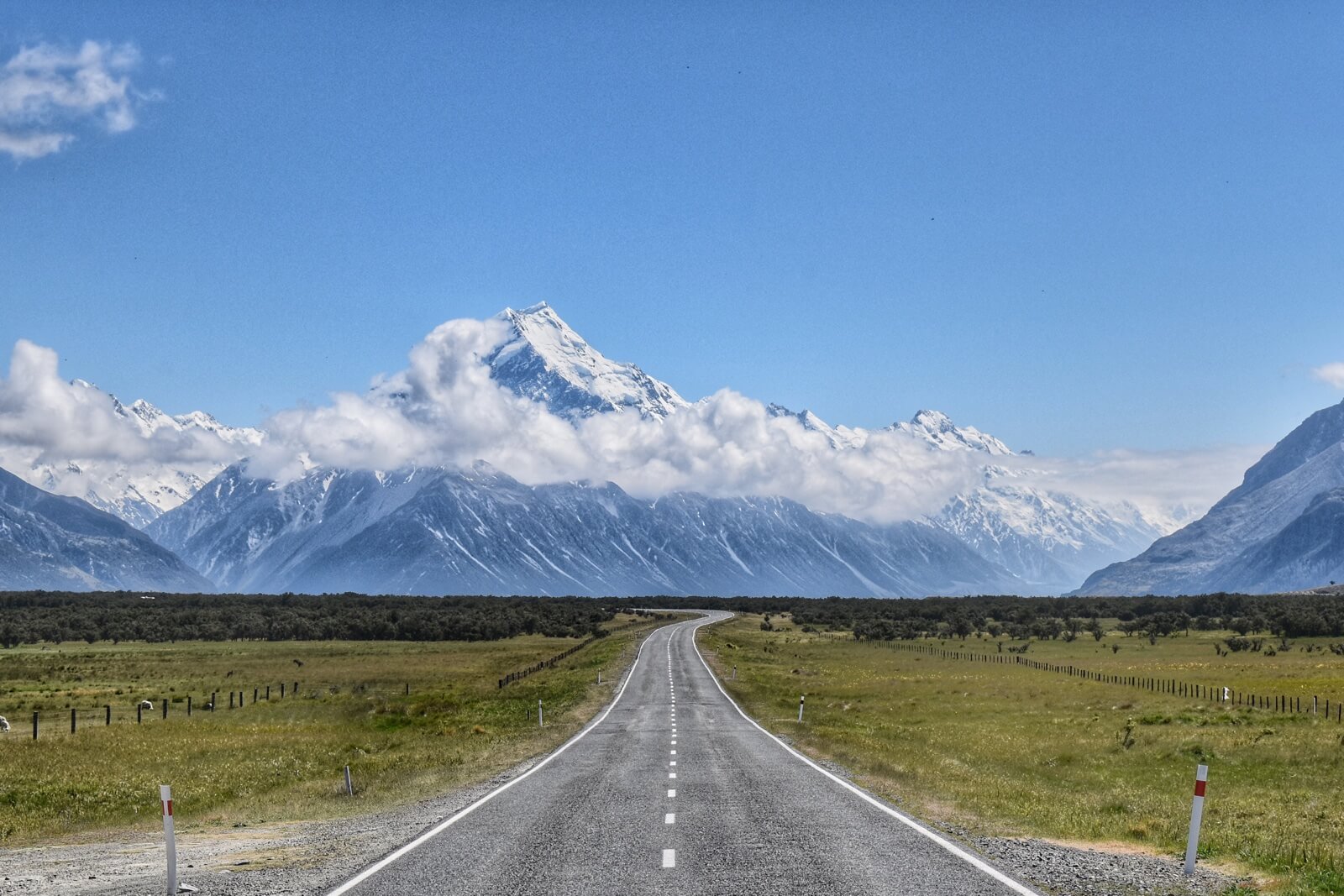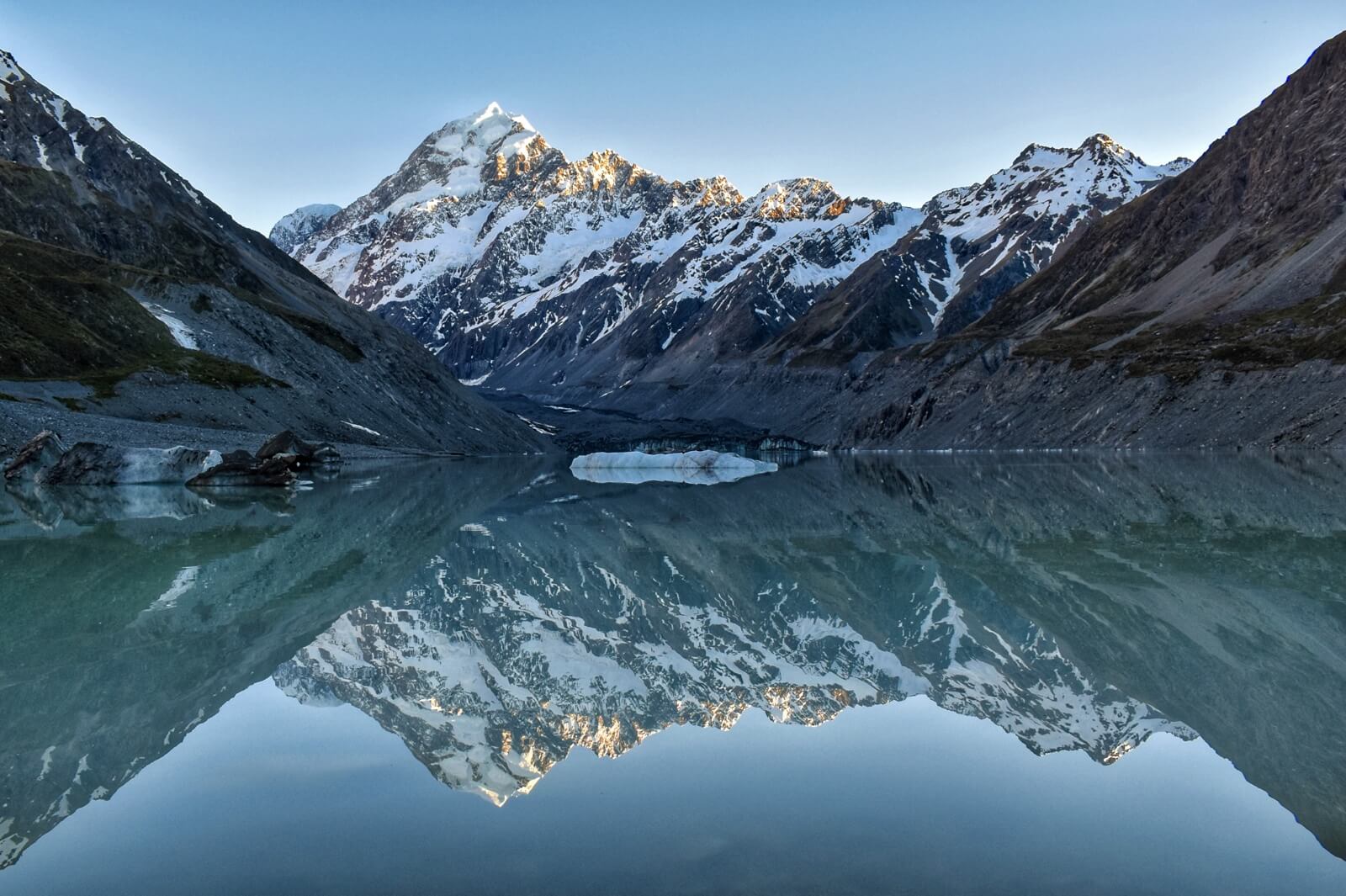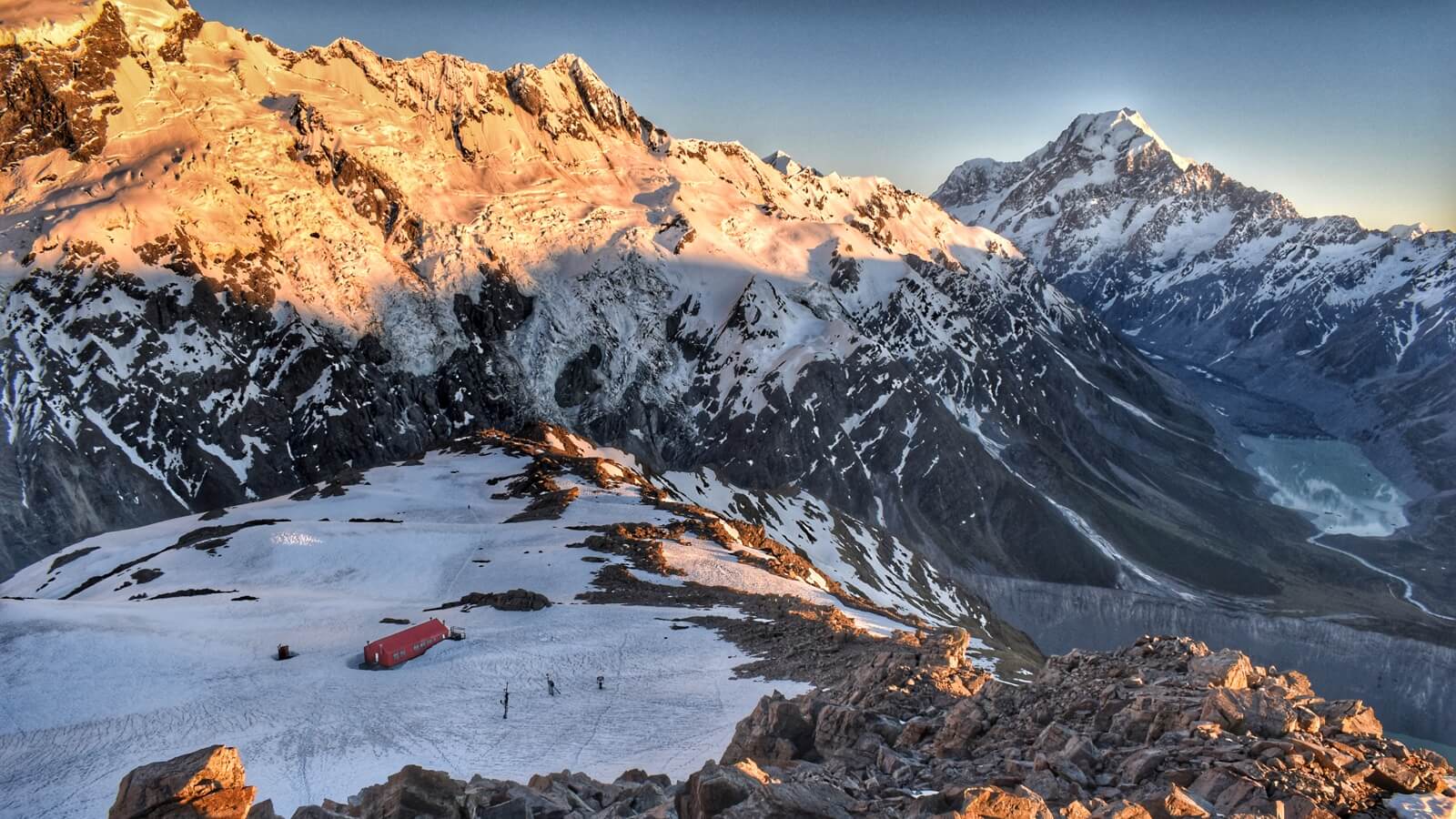With 3 weeks left of our journey we left Queenstown in search of bigger things. The road towards Christchurch is famous for giving access to New Zealand's tallest mountain and views of distant things are even bigger than Mount Cook.
After a short stop in Wanaka for one more ice cream and to pine at the beautiful lake for possibly the last time, we set out for Tekapo. The town is named after the lake it sits next to and is famous for two things. The first is the Church of the Good Shepherd - a quaint old stone church next to the lakefront. Much like the Wanaka tree, this is an inexplicable tourist draw which pulls in sometimes literally bus loads of tourists - in the time we were there we saw three Chinese couples posing in western wedding outfits in front of the church. The second thing that Tekapo is famous for is its night skies and is the heart of the ‘Aoraki Mackenzie International Dark Sky Reserve’. The mountains around the area seem to give Tekapo clear skies more often than most places in New Zealand. When you combine that with how uninhabited the region around it is and light restrictions in the town, you end up with a Mecca for stargazers.
We were keen to see what the night sky had to offer and had read about the Mount John observatory, an active research facility for the University of Canterbury that opens its doors at night and lets tourists use its telescopes. As it turns out we were going to be heading in that direction just after a new moon, when the glare of the moon is taken out of the sky and you can see most stars. The tours are popular and sell out in advance so we decided to pick a day and hope for clear skies.

It wasn't until after we'd paid through the website that we found out that the two hour tour we'd booked wasn't due to start until 1:45am. We'd known it would be after midnight, but didn't expect it to be that late. Campervan life has changed our body clocks to be more used to getting up and going to sleep with the sun, so this was going to be a challenge. We decided to sleep for a couple of hours first rather than trying to stay up all night. As we closed our eyes the skies were mostly clear and the stars were starting to come out.
When we woke it wasn't quite so clear. There were patches of stars, but about half of the sky was covered in cloud. We drove to the start of the tour and were told, many times, that the weather was very changeable. Due to the changeable nature of the weather they wouldn't be able to guarantee a stargazing tour. If we wanted we could get our money back. Alternatively we could go anyway and try to see the stars, and have a changeable tour to go with the changeable weather, changing between stargazing and learning about the stars of the southern skies and the equipment they use to observe them as the weather changed. While we were debating the choice the woman in the centre told us that she had just received a call from the top of the hill, saying that… the weather was still very changeable.

In the end we decided to gamble and really enjoyed our tour, getting the best of both worlds. We saw stars and other galactic wonders through smallish (1m long) telescopes and had some of the wonders of the southern skies explained to us. On top of that we got the large (room-sized) telescopes explained to us and learned some tips for how to navigate by the stars as well as some information about why you can see more interesting astronomical features in the the southern hemisphere than the northern.
After an interrupted night in Tekapo we set off on the road to Mount Cook. The Maori name for the mountain is Aoraki which means cloud piercer and as we drove on the road towards it the name seemed very fitting. While we were driving along the road to the national park the previous night's clouds began to clear away and the peak pierced through the top of them.

First on our itinerary was the Hooker Lake Track - a 5km hike to a glacial lake with huge chunks of ice still floating in it. We only had to climb 100m along the way and had panoramic views of some of New Zealand's tallest mountains the whole way, but it felt a lot harder than we'd expected due to the fact that summer had started in full force. We'd been warned about the strength of the sun here due to the hole in the ozone layer and here, for the first time, we really felt the effects of it.

The highlight of the trip into the national park was an overnight stay at Mueller Hut, 1800m above sea level with views of Mount Cook. The first half of the climb up was via 2200 seemingly never-ending steps. Not long after we'd finished celebrating the end of that section, things got harder. Although it was the beginning of summer and very hot, in true polite New Zealand fashion nobody seemed to have told the snow that it needed to leave. The second half of the walk involved climbing through deep snow, trying not to slip and gambling with foot placements - pick the wrong one and your foot might sink 50cm. Every step on our already tired legs felt like five regular steps, but we made it to the top and were greeted by a west-facing terrace area on the hut, which served as a great place to dry our shoes and socks and watch the sun go down.
The hut itself is the fifth Mueller Hut. The first was built over 100 years ago and this one, built in 2003, is the result of a series of both planned and unplanned (avalanche) decommissionings. It wasn't quite as fancy as the huts on the Milford Track, but it had gas for cooking, fresh water and shelter, which was all we needed. We briefly spoke to the warden, a volunteer who had just finished university for the year. She would be in the hut for a week then it would be someone else's turn. There are worse places in the world you could spend a week.

After a sunset, a sunrise and a lot of stars, it was time for us to make the journey back down. The descent on the snow was easier, though we could've done it faster. A popular way to make the descent is to sit on your pack, using it as a sledge and slide down sections of the snow. There were several very obvious places that we could've done this, where so many people have slid that a rut almost the size of a bobsled run had been carved. We chose to use our feet, though occasionally we involuntarily used our hands or bums.
Back at the bottom we gladly made use of the showers at a public shelter and once again dried our shoes in the sun. This section of the trip was the last of our must-do items on the agenda and it lived up to expectations. Next up we're starting to head back north, to get to some of the places we missed on the journey south due to time constraints or bad weather.